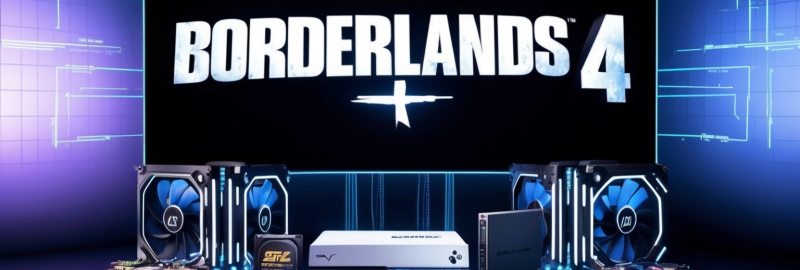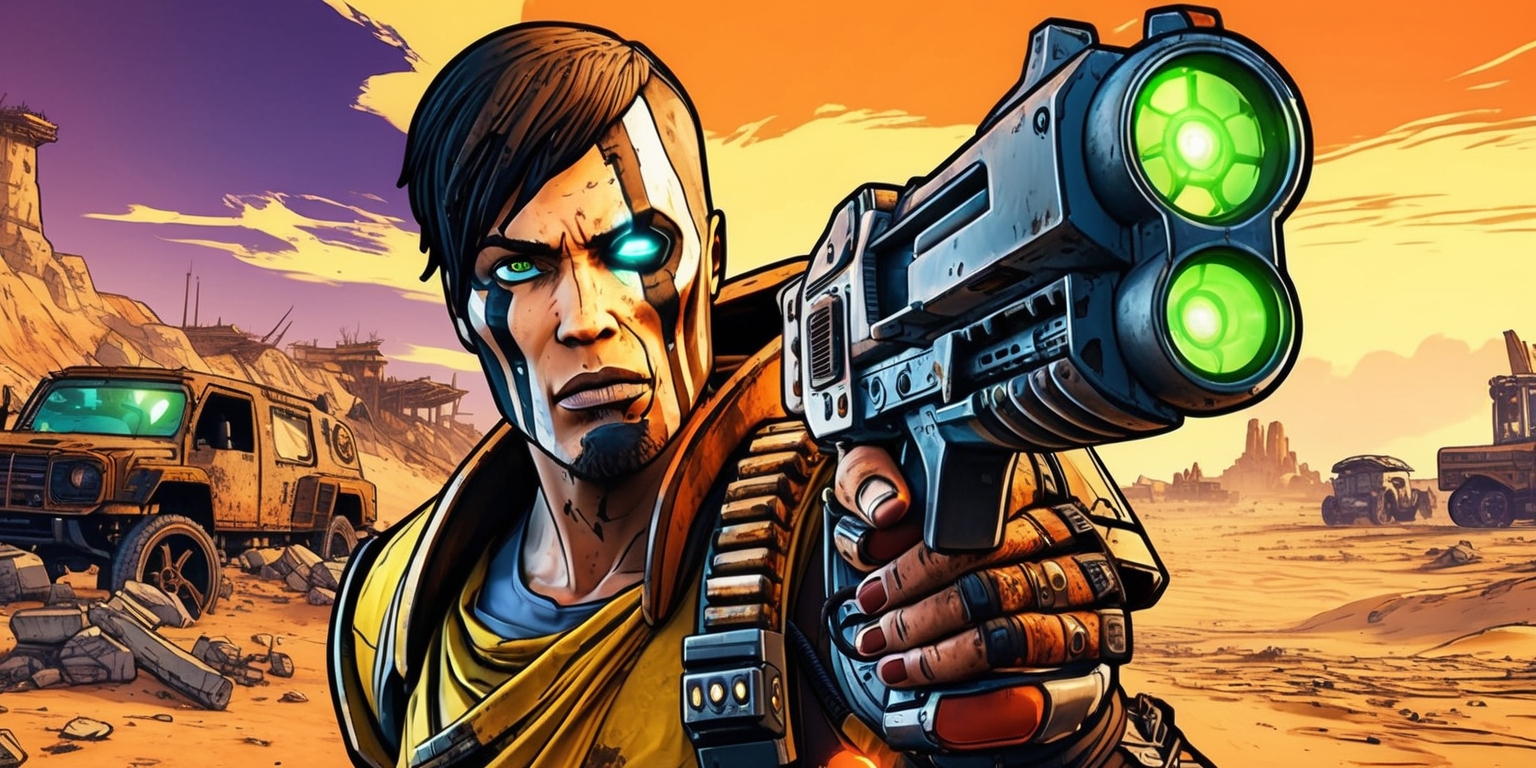
The announcement of Borderlands 4's PC specifications has sparked an outpouring of enthusiasm among fans and tech enthusiasts alike. While discussions initially centered on pricing and preorder details, the spotlight soon shifted to the eye-catching system requirements that promise an immersive experience for those with high-end hardware. Enthusiasts are now eagerly comparing their current setups against the recommended benchmarks to ensure a seamless journey through the game’s expansive universe. This unveiling not only sets a high standard for graphical fidelity and performance but also offers insights into the intricate balance between hardware capabilities and creative vision, inviting players to explore every technological nuance embedded in the game’s design.
Revealing the Hardware Blueprint
Central to the discussion is the detailed breakdown of both minimum and recommended system configurations for Borderlands 4. The recommended specifications suggest robust components, including a 64-bit processor along with platforms like Windows 10 or similar alternatives Windows 11. For optimal performance, the guidelines call for CPUs like the Intel Core i7-12700 or AMD Ryzen 7 5800X, paired with 32 GB RAM, to ensure smooth gameplay during intensive sequences. Additionally, the graphical demands are centered around powerhouses like NVIDIA GeForce RTX 3080 or AMD Radeon RX 6800 XT. Although the storage demand stands at 100 GB, the inclusion of SSD storage further highlights the developers' emphasis on swift load times and seamless data streaming. This technical blueprint provides a clear signal to players that the game is geared towards an environment where hardware meets creative fidelity.
Balancing Minimal and Ideal Performance
The contrast between the minimum and recommended requirements reveals much about the balance the developers are striving to achieve. The minimum setup requires components that are powerful yet accessible to a broader audience, featuring CPUs such as the Intel Core Intel Core i7-9700 or AMD Ryzen 7 2700X paired with 16 GB of RAM, combined with graphics solutions For instance, you could consider NVIDIA’s RTX 2070 or a comparable model from AMD Radeon RX 5700 XT. Although these are sufficient for a functional experience, the recommended specs not only elevate performance but also promise enhanced visual effects and smoother mechanics during high-traffic scenarios in the game. This dual-tiered approach ensures that while core gameplay remains playable on a wider range of systems, enthusiasts with top-tier hardware can fully They can plunge headfirst into a dynamic and demanding realm that Borderlands 4 is designed to offer.
Evolving Game Architecture and Engine Demands
Delving deeper into the requirements, one notices that Borderlands 4’s architecture is no ordinary design—it is built on a sophisticated engine that seamlessly integrates highly detailed environments with dynamic action sequences. The game’s reliance on 64-bit processors underscores a commitment to processing power that can handle intricate tasks without compromise. The need for an 8+ CPU core configuration, as stated in both the minimum and recommended lists, ensures that even multi-threaded processes within the game run smoothly. Coupled with significant GPU demands, such as the necessity for 12+ GB of VRAM in the recommended setup, the developers have clearly designed Borderlands 4 to push modern hardware to its limits. This aspect invites players to experience complex simulations that blend expansive open worlds with intricate physics and detailed character animations.
Modern Graphics: Pushing Visual Boundaries

One of the standout considerations in the technical specifications is the emphasis on high-quality graphics. The recommended graphics cards, like the NVIDIA GeForce NVIDIA’s RTX 3080 paired with AMD’s Radeon RX 6800 XT, are known for their impressive rendering capabilities, particularly when it comes to handling advanced effects. Although some configurations, such as the AMD Radeon RX 5700 XT, may not support cutting-edge visual enhancements like ray tracing to the same extent as their counterparts, they still deliver a visually compelling experience. The detailed VRAM requirements signal that the game is engineered to operate at high resolutions with advanced texture quality and environmental details. By enforcing this level of graphical demand, the developers create an immersive landscape that is both visually rich and technically challenging, pushing the envelope of what modern GPUs can achieve.
Memory and Storage Dynamics
Behind the glossy presentations and stunning visuals of Borderlands 4 lies a foundational requirement in memory and storage. Both the minimum and recommended setups insist on SSD storage and a considerable amount of available space—specifically a hefty 100 GB. This decision underscores the need for rapid data access, ensuring that asset streaming and in-game transitions occur without delays. Additionally, the difference in memory requirements—16 GB versus 32 GB depending on the setting chosen—highlights the game’s capacity to utilize larger memory reserves to manage more complex scenes and background processes. Such requirements hint at a game architecture where quick memory access plays a pivotal role in maintaining high frame rates and fluid gameplay, particularly in scenarios where multiple elements coexist and interact simultaneously across a vibrant digital landscape.
Processor Choices and Their Impact
At the core of every gaming adventure lies the processor, and Borderlands 4’s specifications emphasize the role of powerful CPUs in delivering a seamless adventure. The recommended CPUs, such as the Intel Consider using: "the Intel Core i7-12700 model paired with AMD’s Ryzen 7 5800X processor.", ensure that players enjoying the game on high-end machines can expect a robust performance even during the most demanding sequences. The minimum requirements do not stray far behind, featuring dependable processors like the Intel Core i7-9700 and AMD Ryzen 7 2700X. Notably, while some industry voices propose alternatives like AMD Ryzen 5 9600X for a smoother experience, it becomes evident that the aspiration is for a processor that can handle multiple imports concurrently. This outlook is reflective of a game design built around intensive background processing, ensuring that varied animations, AI routines, and physics computations work in harmony.
Innovative Dynamics of Graphical Requirements
The game’s stance on VRAM and graphical processing is a clear nod to the necessity of forward-thinking design in an era dominated by visual excellence. Both recommended and minimum setups specify a range of VRAM—from 8 GB on the lower end to 12 GB on a more advanced scale—which provides clues about the textures, environmental details, and dynamic lighting systems you can expect during gameplay. While certain graphics cards may lack features such as full-scale ray tracing capabilities, the fact that the game supports a mix of high-performance and slightly older models demonstrates flexibility in implementation. This inclusive approach means that while the game strives for the highest visual fidelity possible, it remains accessible For those who have not yet made the transition to the Alternatively: For individuals who have yet to switch over to the very latest technology. This balance not only broadens the game’s appeal but also ensures a high-quality visual landscape.
Exploring Additional Game Content and Replayability
Beyond the realm of technical prowess, Borderlands 4 is gearing up to deliver an expansive package of post-launch experiences. Alongside the core game, the developers have integrated plans for new vault hunters, additional story arcs, and side missions that promise dynamic new challenges. Players opting for the premium editions will find tempting opportunities to immerse themselves in elaborate bounty packs that bring new areas, quests, and unique boss challenges. These additions are designed not merely as cosmetic or minor enhancements but as significant expansions that deepen the game’s lore and provide fresh modes of engagement. The inclusion of extras without relying exclusively on taxing graphics or heritage gameplay emphasizes a commitment to replayability and a vibrant, evolving narrative landscape.
Platform Diversity and Cross-Experience Expectations
Interestingly, while the focus here is on PC enthusiasts, Borderlands 4 is designed to make a mark on multiple platforms. With anticipated releases on PS5, Xbox Series X|S, and the upcoming Switch 2, the game aims to deliver a consistent yet platform-tailored experience. The PC specifications underscore the ambition of the game to push boundaries on hardware, yet the fact that it's also slated for newer console versions signals an adaptive approach to performance optimization across different systems. This multi-platform strategy is reflective of a broader industry trend where high-end graphical experiences are being reimagined for various hardware constraints. The careful balancing of system requirements ensures that regardless of the platform, players can dive into a world rich in detail, narrative depth, and interactive challenges.
Understanding the Role of Software Optimization
While the discussion frequently circles around hardware requirements, the software optimizations that accompany Borderlands 4 deserve equal attention. The game demands SSD storage and substantial VRAM not merely for aesthetic prowess but also for the streamlined execution of complex software algorithms. Behind every detailed texture and every dynamic lighting effect is an intricate system of data management and rendering techniques honed over time. The emphasis on a 64-bit processor reiterates the need for modern computing power to handle large chunks of data efficiently. This, paired with a careful configuration of CPU cores, indicates that the game is meticulously designed to maximize both hardware and software capabilities. In doing so, Borderlands 4 "serves as clear evidence of the seamless blending" of code and hardware in modern gaming.
Embracing Future-Proof Gaming Experiences
The detailed system requirements for Borderlands 4 underscore a broader vision geared toward future-proof gaming experiences. As technology rapidly evolves, the game positions itself as a title that capitalizes on the latest innovations—be it through high-end graphical processing, enhanced multi-core utilization, or expansive memory management. The blend of robust hardware benchmarks with features like SSD demands and advanced GPU requirements makes it clear that the developers are charting a course towards longevity and high performance. Enthusiasts who invest in the recommended setup can look forward to an experience that is designed not Not solely for the present but also paired with an… eye on upcoming technological advancements. This forward-thinking approach ensures that Borderlands 4 will remain relevant in the dynamic landscape of gaming entertainment.
Delving into Gameplay and Immersive Storytelling
Borderlands 4 is poised to offer much more than just technical marvels, emphasizing an immersive gameplay experience that ties every hardware feature to engaging storytelling. The game is set to challenge players with a fluid mix of strategic on-screen action and exploration within vibrant, meticulously crafted worlds. Each setting is designed with intricate attention to detail, reflecting not only on the visual fidelity demanded by the specs but also on refined narrative arcs that drive the gameplay forward. As players progress, they can expect a series of missions, engaging side quests, and interactive elements that They demand not only rapid responses but also a sharp, strategic mindset. The underlying technology serves as a conduit for these interactive storytelling methods, making every encounter and challenge a testament to the robustness of modern game design.
